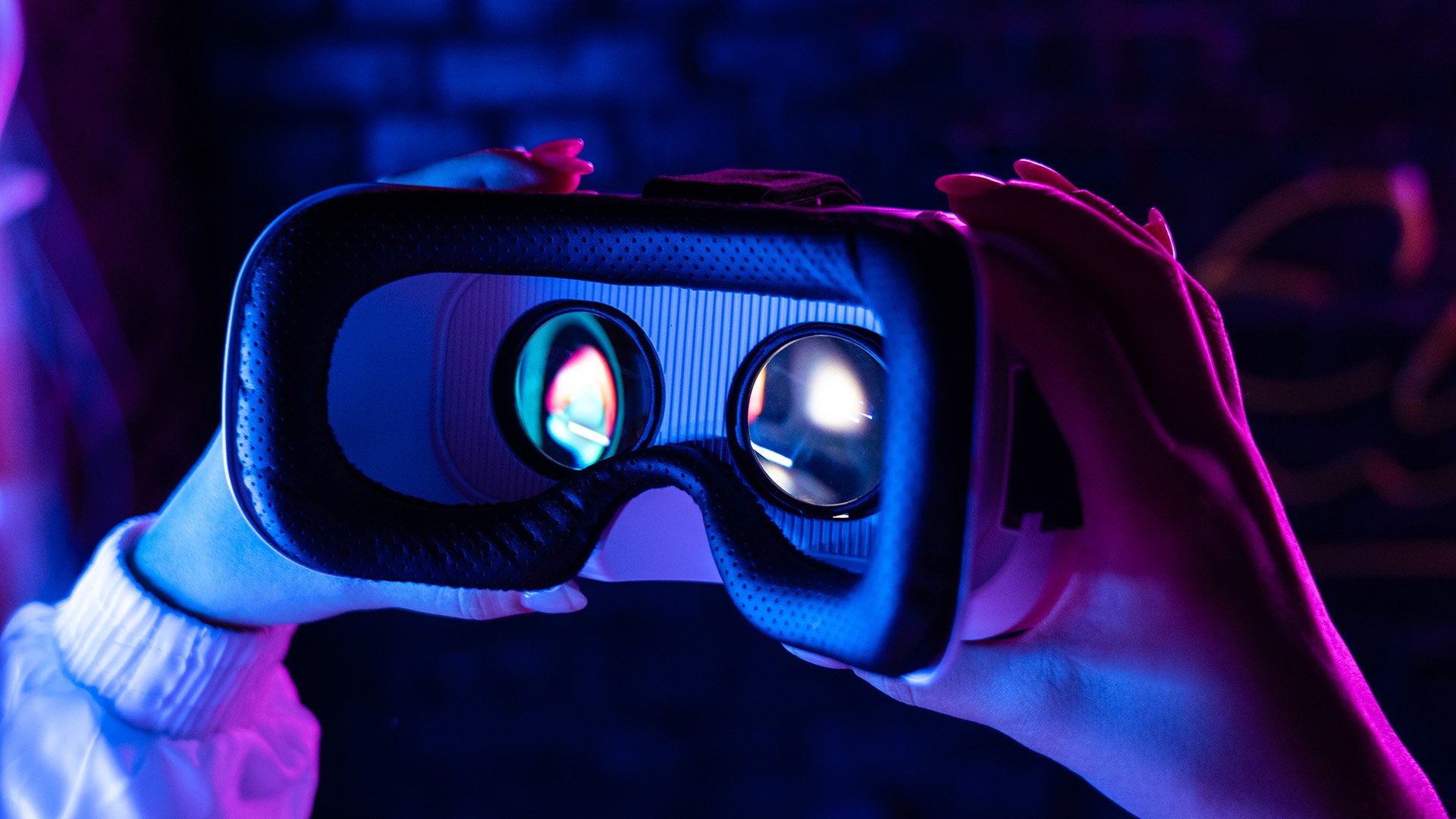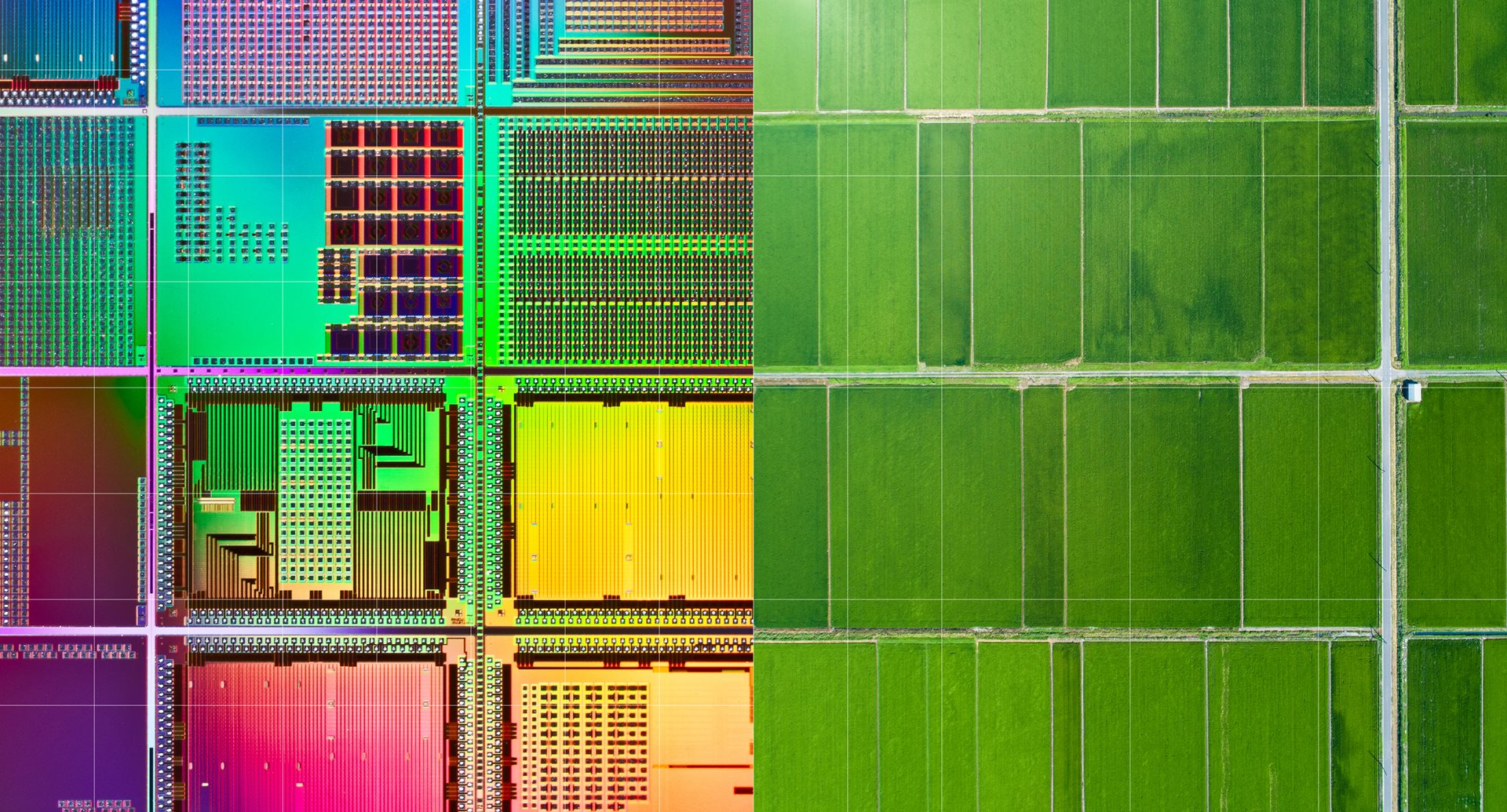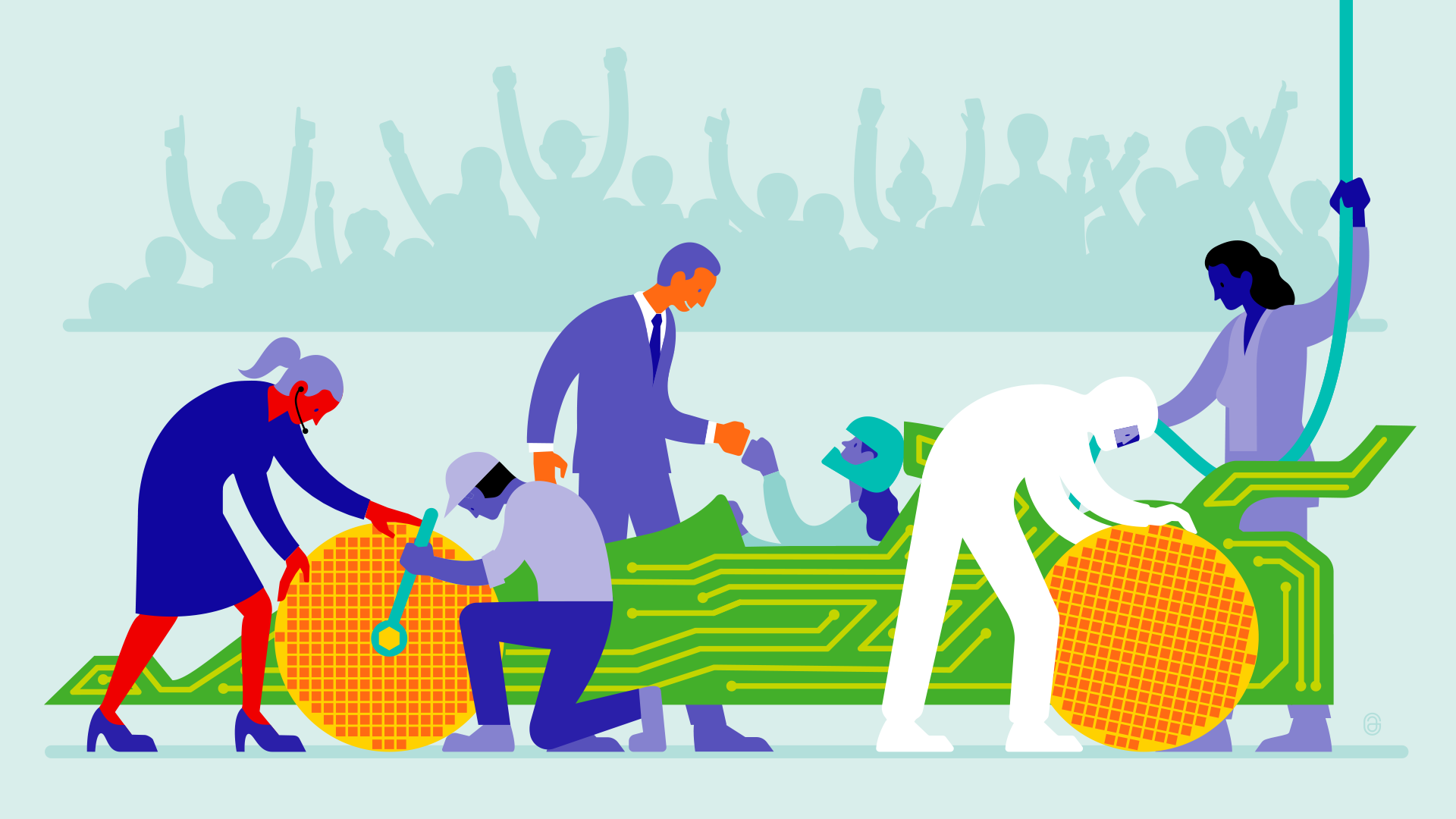6-minute read - February 15, 2023
Today, over 40 billion connected devices are in use worldwide. In fact, you’re probably reading this on one of them. By 2030, the number of devices is expected to grow to around 350 billion – with every swipe, click and connection depending on a microchip.
We’re the world’s top supplier of lithography systems. All the world’s major chipmakers rely on ASML systems to mass-produce microchips with increasing functionality, performance and energy efficiency while reducing their size. Known as ‘affordable shrink’, this means we can all do more things, faster and more conveniently than ever before.
Creating smaller and smaller patterns on silicon to deliver a bigger and bigger impact is a well-established trend in the chip industry. And thanks to the commitment to innovation of our 39,000 employees, there’s a lot more to come.
Our teams are continuously pushing the boundaries of physics and shaping the future of life, work and play – helping our customers innovate the technologies that can help humanity manage challenges and seize opportunities by facilitating smart living and mobility, accessible healthcare, food security and the transition to renewable energy.

Imagined by science, enabled by ASML
Delivering higher performance at lower cost with each new microchip generation, the relentless pace of Moore’s Law has changed the world in which we live. Over the past couple of decades, the cost and size of chips have been reduced dramatically, while computing power and energy efficiency have increased. It’s now possible to put a chip in practically anything, opening up a world of possibilities for connected and smart devices in the internet of things (IoT). This expansion of possibilities is what continues to drive the growth of the $618 billion (2022) global semiconductor industry.
Microchip technology enables humankind’s progress in many areas of our lives. Here we take a quick look at some examples of how our groundbreaking solutions can be a force for good in seven key application areas:
Tackling pollution
Nano innovations, macro challenges
Our lithography systems help to reduce chip size as well as increase performance and energy efficiency. That’s opened the door to nano-innovations such as the ‘winged microchip’.1 Inspired by the way seeds disperse through the air and developed by a team from Northwestern University in the US, these ultra-miniaturized electronic devices can ride the wind to track air pollution, airborne disease and environmental contamination, before eventually falling to Earth. They can be made from biodegradable materials to prevent environmental contamination.
Although tiny in size, the flyers are large enough to carry the necessary electronics, sensors, antennae and power sources so they can communicate with a smartphone or each other. Other sensors could be developed to monitor factors such as air acidity, water quality and solar radiation.

Global well-being
Molecular-scale diagnostics, global health impact
The COVID-19 pandemic underlined the urgent need for a new generation of healthcare diagnostic tools. Ongoing scaling and miniaturization could result in a microchip smaller than a fingernail that can grab a single molecule and analyze it, providing real-time access to biological information and enabling well-being on a global scale.
Imec, a world-leading R&D and innovation hub based in Belgium, has developed a ‘lab-on-a-chip’ that could transform expensive bench-top diagnostic equipment into tiny, affordable and disposable solutions that deliver highly specific and accurate assay results faster. By integrating microfluidic, photonic and electronic components onto a microchip, system size and costs for liquid biopsies can be further reduced. Testing times also decrease, down to minutes instead of hours. A large variety of diagnostic tests can be transferred to such a ‘lab-on-chip’ solution – including single-cell assays, toxicity assays, immuno-assays, genetic assays – that is easy to use for high-volume testing.

Food security
Lower cost, higher yield
Farmland in remote locations, particularly those with emerging economies such as Kenya and Ethiopia, can be extremely vulnerable to climate change. With access to mobile devices increasing, local farmers are now using their smartphones to improve agricultural knowledge and decision-making. The results are better crops and greater, more sustainable food security – enabled by smaller, more affordable microchips.
According to a report from telecom firms Vodacom, Vodafone and Safaricom, in partnership with the United Nations Capital Development Fund2, emerging evidence from Asia and Africa shows that digital solutions could increase efficiency, productivity and income. Smart devices can help farmers access real-time weather information so that they can better prepare and plan for extreme conditions. Aerial images from satellites or drones, together with internet of things (IoT) technology such as soil sensors, can reduce vulnerability to changing conditions by making it possible for farmers to manage crop growth and crop health in real time.

Energy transition
Tiny connections, huge implications
The shift to renewables is helping deliver the clean, affordable energy the world needs to counter climate change. Semiconductors are harnessing, converting, transferring and storing energy from sources such as solar and wind power as electricity, and ensuring that national power grids are both responsive and robust. For example, smart grids enabled by semiconductors can charge electric vehicles at night when offices and homes are using less electricity, helping to smooth the peaks and troughs of demand.
But mitigating climate change also means reducing demand by making sure that end-use applications are as energy-efficient as possible. For example, IoT technology can help businesses and citizens cut energy consumption and save money. Smart sensors can detect room occupancy, allowing lights and heating to be switched off and on automatically. Smartphone applications also make it possible for people to remotely control their appliances when they are away from home. Energy-intensive appliances such as washing machines can be turned on or off by phone to make sure they operate when energy tariffs are lower.

Smart mobility
Individual choices, shared benefits
Across the world, people are changing their views about personal transport. Instead of owning expensive and environmentally harmful vehicles, they’re seeking to get from point A to point B through car-sharing, ride-sharing, ride-hailing, micro-mobility (using small, low-speed, human- or electric-powered transportation devices) and micro-transit (on-demand shared private or semi-public transport). The technologies that underpin this move to smart mobility, such as mobile apps, are all enabled by semiconductors. In Berlin, for example, the city’s public transport operator has developed an app that gives travelers access to its subways, trams and buses as well as other offerings including shared cars, bikes and electric scooters.
Semiconductors are also key to emerging technologies such as autonomous (driverless) vehicles as well as more established solutions, such as anti-lock braking systems, that are making our roads safer. As we transition away from fossil fuels, electric vehicles will become the norm and require new, potentially diverse electronics. In fact, some vehicles can now exchange data through central hubs and with each other via cellular, Wi-Fi, satellite and other technologies. According to technological research and consulting firm Gartner, automotive systems already use 10% of all semiconductor devices produced globally, and that number continues to rise.

Virtual and augmented reality
Virtual reality, unreal opportunities
Virtual reality (VR) and augmented reality (AR) are about more than just gaming. Several years ago, we began exploring how VR and AR could help us solve the unique challenges involved in designing, building and maintaining our complex lithography systems.
This work was given new urgency by the start of the COVID-19 pandemic in 2020 because our people could no longer make personal visits to customer sites. Our response was to create a joint task force of more than 100 ASML experts with different backgrounds to collaborate on finding a solution. Working together from their homes around the world, this cross-functional team quickly developed a game-inspired AR solution that enabled subject matter experts to ‘enter’ the cleanrooms in customer fabs to service machines and troubleshoot other issues. In this way, we made sure that our chipmaking equipment continued to operate smoothly and efficiently at customer sites, even in the midst of a global pandemic.
Today, these technologies are starting to have an impact across the life cycle of our systems – transforming how we work, improving our efficiency and underpinning better customer service. Using VR and AR, our teams are now able to manipulate designs and learn how to maintain systems – in some cases, many years before the machines themselves physically exist.

Wearable technology
Ground-breaking tech, life-changing outcomes
Semiconductors are essential to a new range of wearable devices that are beginning to transform medical care, particularly for our elderly populations. ‘Age tech’ companies have appeared in recent years and provide solutions to keep tabs on older adults, particularly those with cognitive decline. These technologies are now being used in home care, assisted living and nursing facilities.
From smartwatches to fall-detection services, tiny sensors, in combination with intelligent data-analyzing applications, can monitor patients’ health and alert caregivers. For example, smart socks or vests can collect data about stress and enable those caring for people with autism or dementia to intervene before things escalate. Paired with artificial intelligence, wearables can even predict conditions such as heart disease and cancer.
The future could see the further emergence of closed-loop health systems that combine the ability to monitor vital signs with smart algorithms and actuators in the form of therapeutic solutions that could not only diagnose, but also resolve, an issue in the human body.

What’s next?
Next-generation chip designs will include more different materials, new packaging technologies and more complex designs. The semiconductor industry will connect engineers from across physical, chemical, biological and computer sciences to help create these new designs and build extraordinary consumer products to improve our lives in the future.
What will always be needed is a way to mass-produce these designs at the right cost. That’s where the full scope of ASML’s lithography systems will continue to prove so valuable. We’re working to ensure affordable shrink, while pushing our entire system portfolio to new productivity levels and imaging performance to enable tomorrow’s most advanced chips.
2022 Annual Report
Read the report to learn about our performance, achievements and more from the past year.




